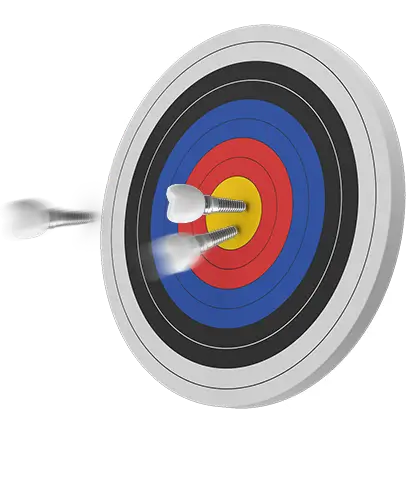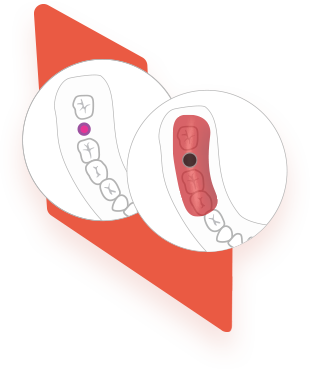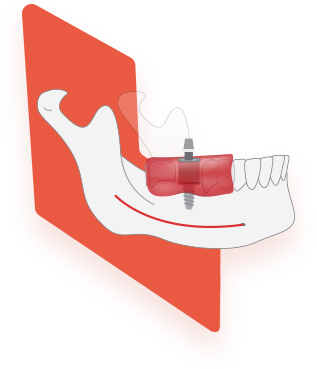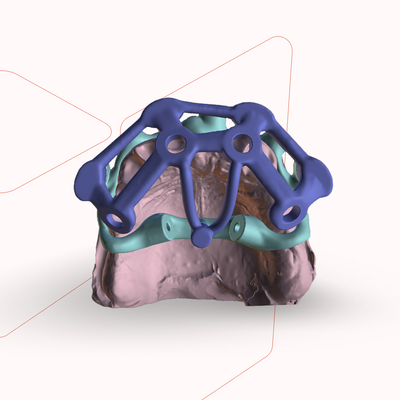

Transform Your Implant Practice With VOXEL3Di Surgical Guides
Traditional implant placement can be imprecise due to anatomical variations and surgical challenges, leading to complications and compromised aesthetics. VOXEL3Di's meticulously crafted, British-made surgical guides bridge this gap.
We utilise FDA-approved resins to ensure patient safety. In addition, our experienced team of implantologists is always prepared to answer your questions and facilitate a consultation for your case to create the most accurate custom guide for the patient.
These guides, available as STL files or shipped directly as 3D prints, ensure optimal implant placement and predictable outcomes.


1 Upload
Required files (our system will guide you) Generally, we will need: 1- CBCT Scan Files 2- Intraoral Scan or Model scan or Denture scan

2 Plan
3D Surgical Guide Design is done and uplaoded 1 to 2 working days

- Sent to dentist for approval..

3 Design
3D Surgical Guide Design 1 to 2 working days

- Sent to dentist for approval..

4 Print
Print STL file at your officeby 3d printer or choose guide printing option to get it printed

5 Insert
Use surgical guide to insert implant
Want to start your implant success journey with us?
Fast , Flexible Total solution
- Our surgical guide is delivered in 5 to 10 working days, depending on the complexity of the case and your approval time.
- The guides are sent as STL files ready to 3D print, or you can choose a 3D printing option to be sent to you ready to use
- You can choose to integrate 3D Digital Smile Design as prosthetic planning.
- Temporary Prosthesis design and printing are optional and delivered in 3 to 5 days.
Ready for Your Perfect Surgical Guide?
Upload your patient's CBCT and STL files, and we'll take care of the rest.
All Types of Surgical Guides
Want to go further?
Check our Stackable Guide and get a full mouth restoration In only one surgical visit.



Voxel3di Implant Drill Guide?
Accuracy
Our expert implantologists meticulously design each VOXEL3Di drill guide. This patient-specific fabrication ensures perfect alignment with your planned surgical approach, minimising deviations and potential complications.

Confidence
With a VOXEL3Di drill guide, you gain unwavering control over crucial factors influencing implant success. The guide accurately directs the drill, significantly reducing the risk of damage to vital structures.

Patient Safety
VOXEL3Di drill guides prioritise patient safety by minimising tissue trauma. Precise implant placement reduces disruption to surrounding tissues, promoting faster healing and minimising the risk of bleeding.

Flapless Implant Insertion
VOXEL3Di guides facilitate precise implant positioning, potentially enabling flap-less implantation.

Less Operation Time
The accuracy of VOXEL3Di drill guides eliminates unnecessary adjustments during surgery. This allows for direct drilling and implant placement, optimising operating time and enhancing overall efficiency.

Fast Healing & Less Bleeding:
By avoiding the need for flaps and accurately guiding the drill away from vital structures, VOXEL3Di guides minimise tissue trauma. This promotes faster healing and reduces the risk of bleeding, leading to improved patient outcomes.

Want to start your implant success journey with us?

F

